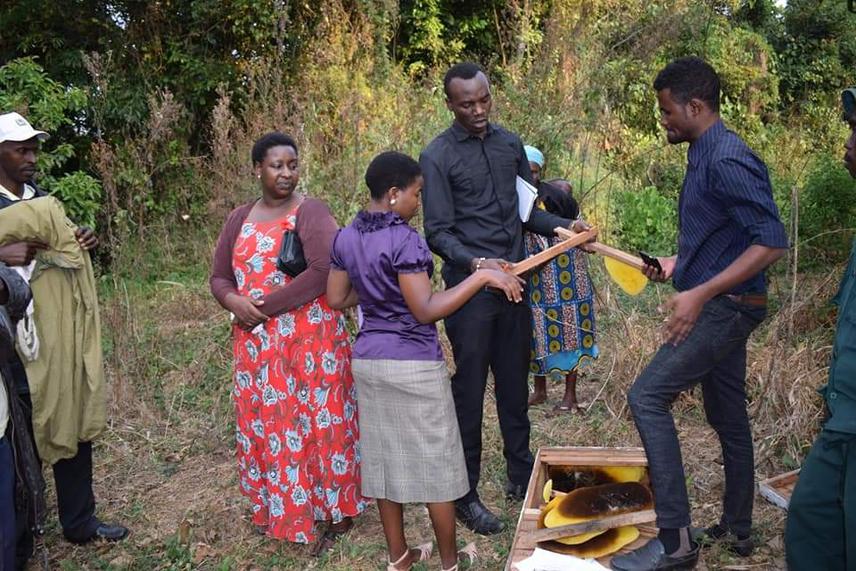Isack Rikohe
Other projects
12 Jan 2024
Local Community's Awareness and Perception of Bee-Plant Interaction and the Contribution of Beekeeping to Ecosystem Conservation and Livelihood Improvement
Honeybees (Apis mellifera) are potential insects globally for their products and services for human life and ecosystem healthier. They offer pollination services to angiosperm plants that assimilate their reproduction and persistence (Hung et al., 2018). The products from honeybees are royal jelly, propolis, pollen, beeswax, honey, and bee venom. These products are used as raw materials or ingredients in different manufacturing industries such as cosmetics, medicine, and beverage.
Honeybees rely on plant materials for their survival and forage on a variety of plants around their home range (Aronne et al., 2012). However, regardless of foraging on different plant species, honeybees show preferences for certain plants than the others (Hawkins et al., 2015).

Hive inspection.
Recently, no study has been done and published on the determination of flowering plants diversity and provide scientific information on honeybees foraging preferences to available plants in Northern Tanzania.
Therefore, this project aims at identifying plant forages, which honeybees prefer the most, in a particular landscape. This is important especially in this era where there are many reported cases of bees decline both wild and managed globally (Fortel et al., 2014; Hawkins et al., 2015). In most cases, these honeybees decline contributed by habitat degradation/destruction (Goulson et al., 2015). Moreover, knowing forages preferred by honeybees helps in the conservation of honeybees, which are potential for the ecosystem (Mallinger & Prasifka, 2017). In turn, we can proceed to benefit from the products and services they offer in agriculture and conservation (Hung et al., 2018). In addition, knowing pants preferred by honeybees will also stimulate apicultural sectors by ensuring the availability of resources for bees especially during the flowers scarcity period in the beekeeping calendar (Kumar & Sharma, 2016).
Field observation will be employed for data collection for both assessing flowering plants diversity and honeybee foraging preferences. For plant diversity, the transect method will be used as conducted by (Ashton & Macintosh, 2002) with some modification. For foraging presences, observation will be carried out from 8 am to 10 am and from 4 pm to 6 pm as the time pollinators visit flowers. The method by (Arroyo et al., 1985) will be used with modifications, which will involve the recording of the number of honeybee visits per flower per time of 10 minutes. The observation will be done in a 5km x 5km area squire plot and the conclusion will be census oriented.